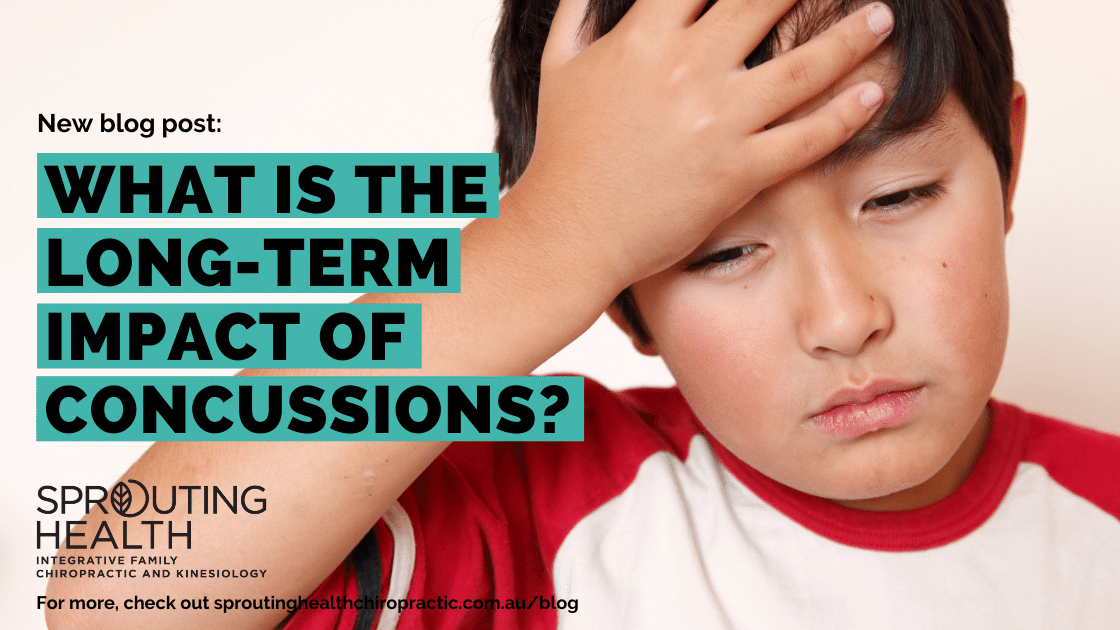|
We recently talked about concussions and the benefits of seeking assessment and treatment from health professionals, such as chiropractors for associated musculoskeletal issues. A brand-new study (systematic review) has come out which looked at the role of neck symptoms post-concussion. (1)
This study found that there was up to 69% prevalence of cervicogenic (neck) symptoms in the acute post concussive stages and that increased up to 90% for those who suffer with persistent post concussive symptoms! They also found that if neck pain was reported at the initial evaluations there was an increased risk of developing persistent post concussive symptom by 2.58-6.38 times. On top of all of this, it was found that manual therapy reduced the time for symptom resolution and medical clearance. (1) Previous studies have shown that chiropractic care is safe and effective (when compared to other interventions) in the management of neck pain and associated presentations. (2-6) Another significant, and often underappreciated, component to concussion recovery is the potential mental health impact. In a different study, also released this year, they reviewed the mental health impact following a concussion in the paediatric population. This review pooled information from over 89,000 children, finding higher levels of symptoms such as withdrawal, anxiety, depression, aggression, hyperactivity, and conduct problems. Further research is needed to clarify the mechanisms behind the apparent relationship, but their results suggest that a concussion could precipitate or exacerbate mental health difficulties. (7) With these results in mind, it is more important than ever to have a multidisciplinary approach to post concussive treatment. So, if you know someone who is struggling after a concussion, why not give us a call and see how we could help manage this with you. References (1) Cheever, K., McDevitt, J., Phillips, J., & Kawata, K. (2021). The Role of Cervical Symptoms in Post-concussion Management: A Systematic Review. Sports Medicine, 1-17. (2) Bryans, R., Decina, P., Descarreaux, M., Duranleau, M., Marcoux, H., Potter, B., Ruegg, R.P., Shaw, L., Watkin, R. and White, E., 2014. Evidence-based guidelines for the chiropractic treatment of adults with neck pain. Journal of manipulative and physiological therapeutics, 37(1), pp.42-63. (3) Bronfort, G., Evans, R., Anderson, A.V., Svendsen, K.H., Bracha, Y. and Grimm, R.H., 2012. Spinal manipulation, medication, or home exercise with advice for acute and subacute neck pain: a randomized trial. Annals of internal medicine, 156(1_Part_1), pp.1-10. (4) Cassidy, J.D., Boyle, E., Côté, P., He, Y., Hogg-Johnson, S., Silver, F.L. and Bondy, S.J., 2009. Risk of vertebrobasilar stroke and chiropractic care: results of a population-based case-control and case-crossover study. Journal of manipulative and physiological therapeutics, 32(2), pp.S201-S208. (5) Thiel, H.W., Bolton, J.E., Docherty, S. and Portlock, J.C., 2007. Safety of chiropractic manipulation of the cervical spine: a prospective national survey. Spine, 32(21), pp.2375-2378. (6) Peterson, C.K., Schmid, C., Leemann, S., Anklin, B. and Humphreys, B.K., 2013. Outcomes from magnetic resonance imaging–confirmed symptomatic cervical disk herniation patients treated with high-velocity, low-amplitude spinal manipulative therapy: a prospective cohort study with 3-month follow-up. Journal of manipulative and physiological therapeutics, 36(8), pp.461-467. (7) Gornall, A., Takagi, M., Morawakage, T., Liu, X., & Anderson, V. (2021). Mental health after paediatric concussion: a systematic review and meta-analysis. British journal of sports medicine.
0 Comments
Leave a Reply. |
AuthorBlogs by the team at Sprouting Health Archives
July 2024
Categories |


 RSS Feed
RSS Feed
